 Weird Stuff
Weird Stuff  Weird Stuff
Weird Stuff  Mysteries
Mysteries 10 Tragic Disappearances and Deaths in Joshua Tree National Park
 History
History 10 Ways Childhood Really Sucked in the Old West
 Music
Music 10 Name Origins of Famous Bands from the 1990s
 Religion
Religion 10 Biggest Turnarounds by the Catholic Church
 Weird Stuff
Weird Stuff 10 Unbelievable Times Laws Had Unintended Consequences
 Humans
Humans Ten Historic Women Who Deserve Way More Credit Than They Got
 Movies and TV
Movies and TV 10 Films That Spawned Major Lawsuits
 History
History Ten Times Towns Were Wiped Off the Face of the Earth
 Creepy
Creepy 10 of the Most Disturbingly Haunted Public Houses in the UK
 Weird Stuff
Weird Stuff 10 Niche Subcultures That Are More Popular Than You Might Think
 Mysteries
Mysteries 10 Tragic Disappearances and Deaths in Joshua Tree National Park
 History
History 10 Ways Childhood Really Sucked in the Old West
Who's Behind Listverse?

Jamie Frater
Head Editor
Jamie founded Listverse due to an insatiable desire to share fascinating, obscure, and bizarre facts. He has been a guest speaker on numerous national radio and television stations and is a five time published author.
More About Us Music
Music 10 Name Origins of Famous Bands from the 1990s
 Religion
Religion 10 Biggest Turnarounds by the Catholic Church
 Weird Stuff
Weird Stuff 10 Unbelievable Times Laws Had Unintended Consequences
 Humans
Humans Ten Historic Women Who Deserve Way More Credit Than They Got
 Movies and TV
Movies and TV 10 Films That Spawned Major Lawsuits
 History
History Ten Times Towns Were Wiped Off the Face of the Earth
 Creepy
Creepy 10 of the Most Disturbingly Haunted Public Houses in the UK
10 Fascinating Facts About Beds, Bedrooms, And Sleep
You probably spend a lot of time in your bedroom. You might not be conscious for most of it, but you’re there. For many, the bedroom is the last thing they see at the end of one day and the first thing they see the next morning.
We often take the welcoming warmth of our beds at the end of a long day for granted, but do we ever consider that there might be more to the history of our safe sanctuaries and their contents than previously thought? Here’s a list of bedroom trivia that you will find more compelling than counting sheep.
10 The Cost Of A Good Night’s Sleep
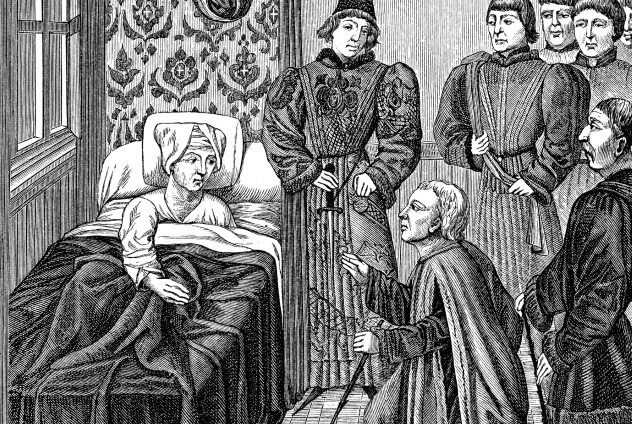
Although nowadays, we tend to take our beds for granted as a common sight in any bedroom, they were once considered extremely valuable items. In later medieval times, they were often placed in areas where guests could admire them or passersby could glimpse them through windows.[1]
They were also known to be left as bequests to inheritors in wills from the 14th century onward. Shakespeare himself willed his second-best bed to his wife, Anne, although this is commonly interpreted as an insult, given that the very best would have been reserved for important guests and such. On the other hand, the second-best bed would most probably have been the marital bed and therefore the more sentimentally valuable one.
9 A Very Large, Famous Bed
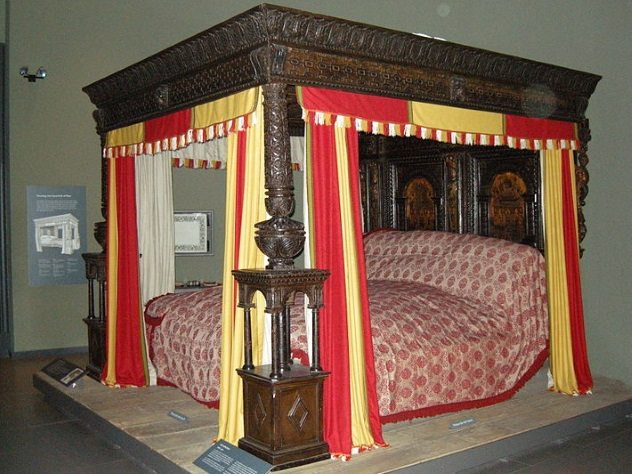
Constructed in about 1590 for an inn in Ware, Hertfordshire, the Great Bed of Ware was supposedly able to accommodate at least eight sleepers in considerable comfort. Over 3 meters (10 ft) wide, the bed was supposedly created as a tourist attraction and was often used by travelers, many of whom carved their names into its wooden frame.[2]
This behemoth of a bed generated such a reputation that it was even referred to in Shakespeare’s Twelfth Night as well as in other plays of the time.
8 The Pillow Was Once Considered An Affront To Masculinity
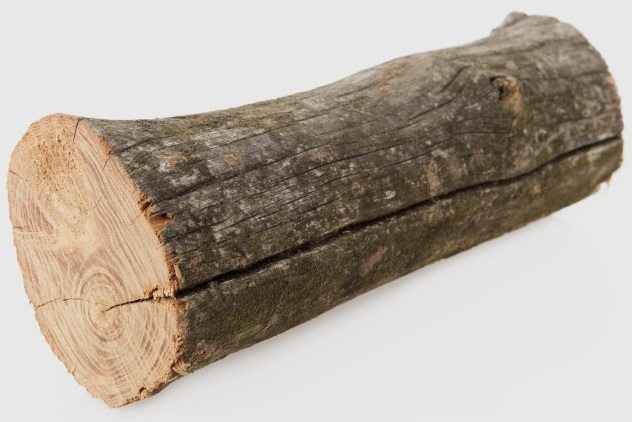 Male or female, we generally don’t question that a pillow is absolutely essential for a good night’s sleep. However, Elizabethan chaplain and writer William Harrison seemed to feel very strongly about the use of pillows by men, whose very masculinity appeared to be threatened by the comfortable recesses of the pillow.
Male or female, we generally don’t question that a pillow is absolutely essential for a good night’s sleep. However, Elizabethan chaplain and writer William Harrison seemed to feel very strongly about the use of pillows by men, whose very masculinity appeared to be threatened by the comfortable recesses of the pillow.
In Description of England (1577), Harrison writes that pillows “were thought meet only for women in childbirth,” and that he and other men of his generation had known only comfort when using “a good round log under their heads instead of a bolster or pillow.” Were a man to have the privilege of having a sack of chaff beneath his head at night, Harrison opined, “he thought himself to be as well lodged as the lord of the town.”[3]
7 The Bedroom Taboo
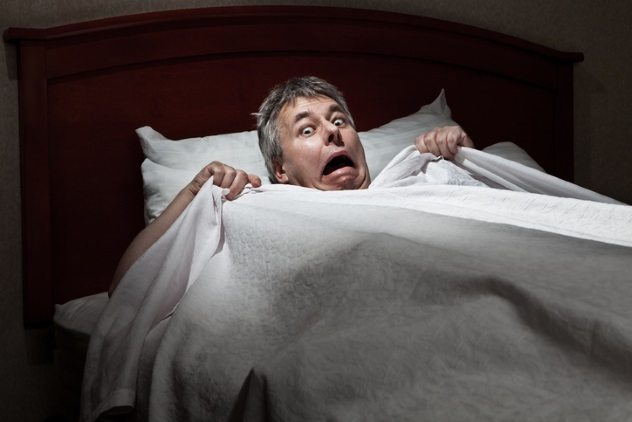
Although frequently associated with comfort and relaxation, the bedroom also goes hand in hand with historically less-than-savory matters, namely sex and masturbation. Although the bed was the only place to which the necessary act of sex within marriage was limited, intercourse was to be had “without a particle of sexual desire” and only once a month, to be safe.
The thought of self-stimulation was, of course, altogether out of the question. Science, however, acknowledged that certain sexual urges were uncontrollable and devised a solution to stymie male arousal. The 1850s saw the development of the Penile Pricking Ring. Lined with sharpened metal prongs, this was slipped over the penis before bed and was guaranteed to limit the swelling of the member around which it was placed.[4]
6 Sleeping In Stages
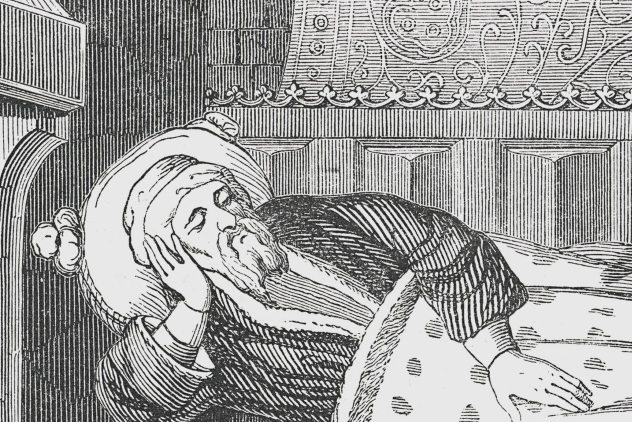
In our time, it seems only logical that one should retire to bed at some point during the evening and rise at some point in the morning. However, there are certain sleep patterns that have been lost to history, which is perhaps a something of a pity.
As Professor Alexandra Harris explains, there was a time during the Middle Ages when it was traditional to clamber into bed at 9:00 PM and sleep until midnight.[5] After these three hours of sleep, it was customary for people across Britain to rise for the “Watching Hour,” a period during which they would eat, read, chat with others, attend to some work, or even devote time to contemplation and prayer. It was believed be a unique interlude during which the brain could enhance its fertility and enjoy a brief spell of energy before returning to sleep until daybreak.
5 Privacy In A Bedroom Is A Newfangled Idea
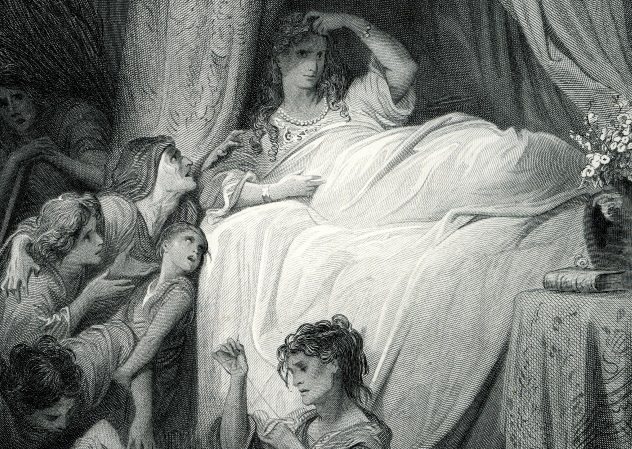
The concept of a bedroom as a place of solitude and privacy was not always known historically. It was not unusual for beds to be shared by complete strangers at inns well into the 19th century, with one of the most famous cases being Benjamin Franklin and John Adams sharing a bed in New Brunswick in 1776. Initially, neither slept a wink, as they couldn’t agree on whether to leave the window open or not. Adams later recounted that the window was opened, but Franklin’s long descriptions of his theories about the benefits of fresh air at night eventually put him to sleep.
Even in private homes, it was common practice for servants to sleep on the floor of their master’s bedchamber—and sometimes even in the bed, particularly when the servant was reliant upon the master or mistress for protection against unwanted advances from other servants or even household members.[6] Family members had to share beds, too (all in varying states of undress). In the latter case, this was most frequently due to the expense of additional beds, and larger families often established rules and boundaries governing the use of the bed, assigning certain spots to various members of the family based on age and gender.
It was not until the Victorian era that a particularly marked shift in bedroom privacy occurred, with individual members of the household assigned separate rooms, and all thoughts of communal beds were banished as immoral and unseemly.
4 A Good Nap Helped Britain Win The War
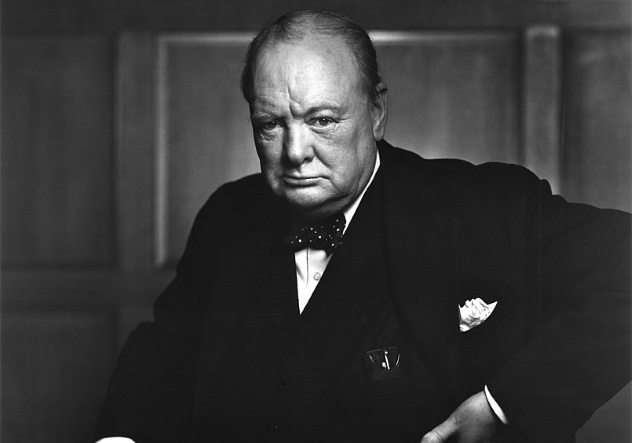
Want to take a nap at your desk and quote someone famous when your boss shakes you awake and demands to know what you think you are doing? Look no further than Winston Churchill.
Churchill once told a journalist that his habit of taking an afternoon nap was the key to staving off pressure and helped him make the decisions necessary to win World War II:
You must sleep some time between lunch and dinner, and no half-way measures. Take off your clothes and get into bed. That’s what I always do. Don’t think you will be doing less work because you sleep during the day. That’s a foolish notion held by people who have no imagination. You will be able to accomplish more. You get two days in one—well, at least one and a half, I’m sure. When the war started, I had to sleep during the day because that was the only way I could cope with my daily responsibilities.[7]
3 Protests From The Pillows
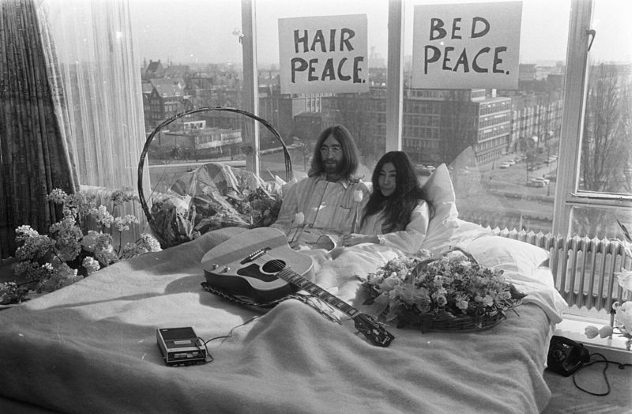
We all know about the various forms of protest made popular over the last few decades: mass demonstrations, rallies, marches, sit-ins, and boycotts, to name a few. However, did you know that the even the bed has been used as part of a protest?
Beginning on March 25, 1969, John Lennon and his wife Yoko Ono spent the week of their honeymoon engaged in what they termed the “Bed-In for Peace” campaign in their hotel suite in the Amsterdam Hilton.[8] Intended as an experimental, nonviolent form of protest against war, the campaign involved both celebrities sitting fully clothed on the suite’s bed together, with hand-drawn signs above the bed reading “Hair Peace” and “Bed Peace.” They also invited global press into their room to discuss peace for 12 hours every day.
A second Bed-In for Peace was subsequently held in the Queen Elizabeth Hotel in Montreal in May 1969. For seven days, the couple spoke and sang about peace with visiting guests.
2 Worried About Oversleeping? Call On A Saint
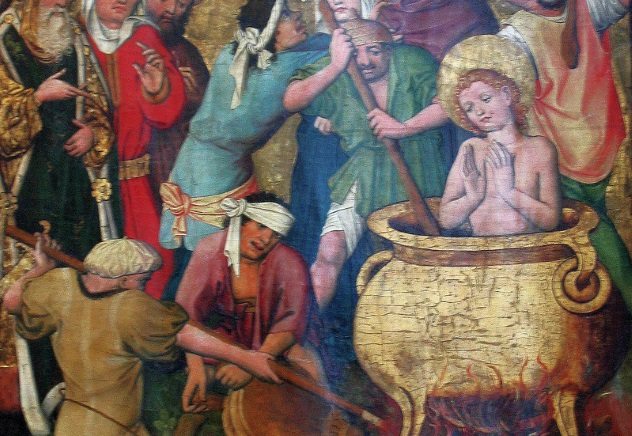
If you’re ever worried about sleeping in and being late for work, you might consider relying on the assistance of a saint to help you rise on time.
Saint Vitus is believed to be capable of preventing those who invoke his name from oversleeping. It is said that he was cast into a pot of boiling oil along with a rooster.[9] Consequently, the saint became connected with the crowing of the rooster and rising early. He is sometimes depicted with a rooster in historical images and paintings.
1 Sweet Dreams Are Made Of Cheese
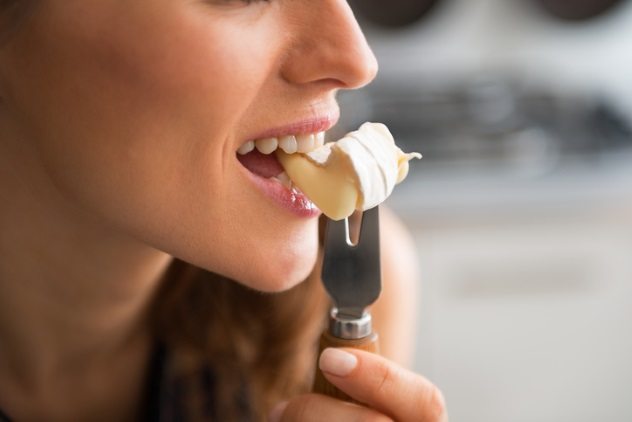
In Charles Dickens’s A Christmas Carol, Scrooge blames a “crumb of cheese” which he ate before retiring for his strange nighttime visions. We’ve probably all heard at some point in our lives that if we want to prevent ourselves from suffering from nightmares, cheese should be avoided before going to sleep. But is this fact or fiction?
Oddly enough, very little research has actually been conducted on the subject, but in 2005, a such a study was actually conducted by the British Cheese Board.[10] Providing a team of 200 volunteers with 20 grams of cheese half an hour before they went to bed every night for a week, the board tested the effects of six different kinds of cheese: Stilton, Cheddar, Red Leicester, Brie, Lancashire, and Cheshire. These volunteers were also instructed to take notes on any dreams they had and what the quality of their sleep was every night.
Consequently, the myth that cheese causes nightmares was debunked. 67 percent of the participants stated that they remembered their dreams, and not one reported having had a nightmare. Perhaps most interestingly, it was found that different cheeses caused the volunteers to experience different dreams. Red Leicester was found to be rather effective in aiding sleep and for creating particularly nostalgic dreams involving the participants’ childhood memories. Cheshire seemed capable of ensuring a dreamless sleep, while Stilton appeared most likely to inspire particularly strange dreams.
+ ‘Sleep Tight’
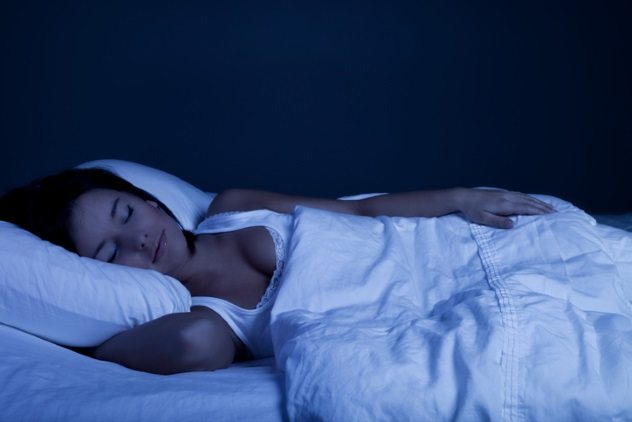
Have you ever wondered why someone told you to “sleep tight” as you climbed the stairs to your bedroom? Perhaps you thought it referred to keeping your eyes tightly shut?
Some believe that this expression refers to the lattice of ropes which was stretched across a wooden bed frame in order to support a feather bed in the 19th century. Others posit that the phrase was cemented by the 1968 Beatles song “Good Night.” Still others claim that “sleep tight” simply means to sleep well.[11]
++ What Do My Dreams Have To Do With Horses?

Ever wonder why our bad dreams are called nightmares? Bizarre as it may sound, the word actually stems from sexual origins.
In Old English, the word “maere” referred to a wicked demon or spirit which was said to steal into the room of an unsuspecting sleeper and lie upon him or her, often believed to engage in sex while doing so.[12] Eventually, the meaning shifted to refer to the feeling of suffocating terror rather than the actual demon.
A postgraduate student of English literature committed to broadening his own epistemological horizons and to helping others do the same.
Read more about sleep on Top 10 Fascinating Things That Happen To You When You Sleep and Top 10 Theories Of Why We Dream.








